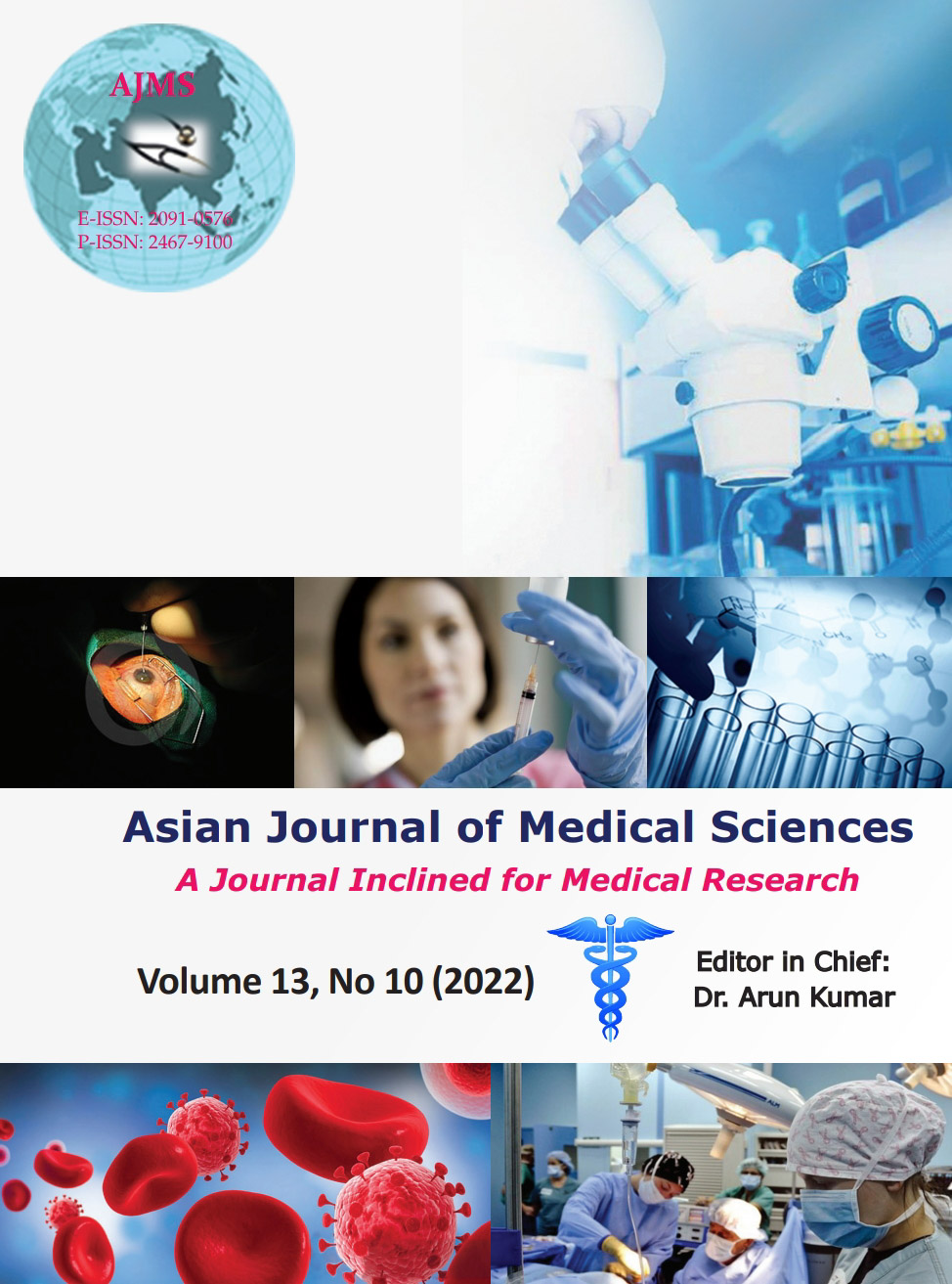Isolation and identification of aerobic bacteria and their antibiogram profile in catheter related bloodstream infection among the hemodialysis patient in a tertiary care hospital
Keywords:
Bacteria; Hemodialysis; Infection; Intravenous catheterAbstract
Background: Catheter-related bloodstream infection (CRBSI) is quite evident in hemodialysis (HD) patients. The pattern of the isolates from the catheter tip as well as blood culture and their sensitivity against antibiotics varies and set a huge challenge for the physician for its management.
Aims and Objectives: The present study was undertaken to isolate and identify, causative organism in CRBSI from the HD patient and to determine the antibiotic susceptibility profile of each isolate and determines the current trend.
Materials and Methods: A total (n=101) patients admitted for HD in the nephrology unit of a tertiary care hospital with preexisting comorbidities such as diabetes and hypertension (HT) were recruited according to inclusion/exclusion criteria after obtaining written consent. Blood samples from peripheral blood vessel of suspected CRBSI patients were collected as well as the catheter tip was cut and collected in sterile test tube and transported to microbiology laboratory for isolation, identification, and antibiotic susceptibility test.
Results: The HD catheter tip culture was found positive in 54 (53.46%) samples out of the total 101 samples. The distribution of catheter tip culture positive patients and their association with diabetes mellitus was highest at age group > 60 years with a p < 0.0001. The association between catheter tip culture positive and HT was also found significant with P<0.0001. After analysis of culture reports of HD catheter tip and peripheral blood, culture-positive reports were found in 15 (14.85%) patients as CRBSI. The distribution of CRBSI predominantly found in the age group of 41–50 years (33%) which was significant with P=0.004. The causative organisms for CRBSI were Gram negative under this study and multidrug resistant too. The only drug polymyxin B was 100% sensitive to Gram-negative organism whereas vancomycin and linezolid were 100% sensitive to Gram-positive organisms.
Conclusion: Patients with kidney disease receiving HD with a central venous catheter experience high rates of bloodstream and catheter tip infection commonly in those suffering from diabetes, HT, and dyslipidemia. The causative organisms for CRBSI were mainly Gram negative with a concern over existence of multidrug resistance strain.
Downloads
Downloads
Published
How to Cite
Issue
Section
License
Copyright (c) 2022 Asian Journal of Medical Sciences

This work is licensed under a Creative Commons Attribution-NonCommercial 4.0 International License.
Authors who publish with this journal agree to the following terms:
- The journal holds copyright and publishes the work under a Creative Commons CC-BY-NC license that permits use, distribution and reprduction in any medium, provided the original work is properly cited and is not used for commercial purposes. The journal should be recognised as the original publisher of this work.
- Authors are able to enter into separate, additional contractual arrangements for the non-exclusive distribution of the journal's published version of the work (e.g., post it to an institutional repository or publish it in a book), with an acknowledgement of its initial publication in this journal.
- Authors are permitted and encouraged to post their work online (e.g., in institutional repositories or on their website) prior to and during the submission process, as it can lead to productive exchanges, as well as earlier and greater citation of published work (See The Effect of Open Access).




